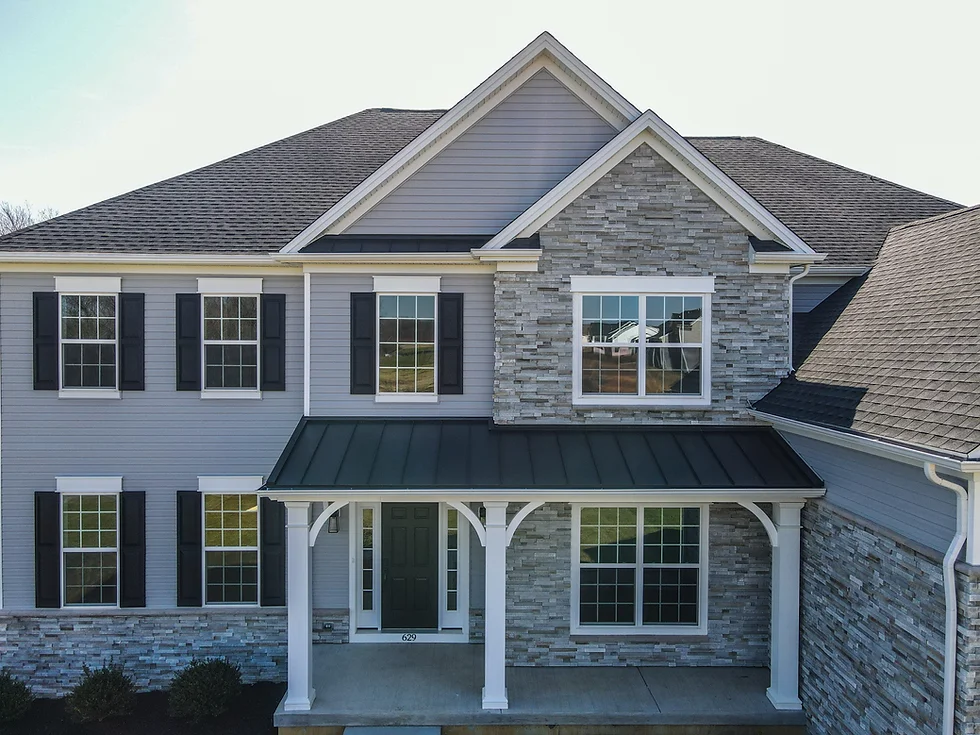Introduction
Hurricane Helene may have passed, but its impact on roofs across St. Augustine, FL, will be felt for years to come. If your home has an asphalt shingle roof, proper maintenance after a hurricane is essential for ensuring its longevity and performance. Even if your roof appears to be in good condition, following a few simple maintenance steps can help prevent future problems and ensure your home remains protected. In this post, we’ll discuss essential roof maintenance tips for homeowners in St. Augustine after Hurricane Helene.

Why Roof Maintenance Is Crucial After a Hurricane
Asphalt shingles are designed to withstand harsh weather, but hurricanes bring extreme conditions that can cause both visible and hidden damage. Even minor wear and tear, if left unchecked, can lead to leaks, water damage, and structural issues over time. Regular maintenance and inspections are key to identifying potential problems early and extending the life of your roof.
Key Roof Maintenance Tips After Hurricane Helene
- Perform a Visual Inspection
The first step in post-hurricane maintenance is to perform a thorough visual inspection of your roof. While you may not be able to spot all the damage from the ground, there are a few signs to look for:- Missing or loose shingles
- Cracks, tears, or punctures in the shingles
- Shingles that appear curled or lifted at the edges
- Granule buildup in your gutters or around the perimeter of your home
- Clear Debris from the Roof
Hurricanes often leave behind debris such as tree branches, leaves, and dirt. If left on your roof, this debris can trap moisture, leading to rot, mold, or shingle damage. Carefully remove debris from your roof and gutters to ensure proper water drainage. - Check Your Gutters and Downspouts
Your roof’s drainage system plays a crucial role in protecting your home from water damage. After a hurricane, it’s important to check your gutters and downspouts for debris or blockages. Clogged gutters can cause water to back up onto your roof, leading to leaks and water damage. Ensure that water can flow freely through your gutters and away from your home’s foundation. - Inspect Flashing and Seals
Flashing is the material used to seal areas where your roof meets other surfaces, such as chimneys, vents, and skylights. High winds and flying debris can cause flashing to loosen or crack, which allows water to seep in. Inspect all flashing and seals on your roof to make sure they are intact and watertight. - Schedule a Professional Roof Inspection
While visual inspections and debris removal are important, a professional roof inspection is essential for identifying hidden damage that could lead to bigger problems down the road. Roofing experts have the tools and experience to detect issues like damaged underlayment, weakened shingles, and structural concerns that aren’t visible from the ground. A professional inspection can also help you file an accurate insurance claim for hurricane-related damage. - Address Minor Repairs Promptly
If your roof inspection reveals minor issues, such as a few missing shingles or damaged flashing, don’t delay repairs. Small problems can quickly become major issues if left unattended. Timely repairs will help prevent water infiltration, maintain your roof’s structural integrity, and save you from more expensive fixes down the line.
Long-Term Roof Care for St. Augustine Homeowners
In addition to addressing immediate concerns after Hurricane Helene, ongoing roof maintenance is essential for the long-term care of your asphalt shingles. Here are some tips to ensure your roof remains in good condition:
- Regular Inspections: Schedule regular roof inspections at least twice a year—once before hurricane season and once after. These inspections will help catch any developing issues before they become costly problems.
- Keep Your Roof Clean: Remove debris from your roof, gutters, and downspouts regularly. Keeping your roof clean prevents the buildup of moisture and mold that can damage your shingles.
- Trim Overhanging Branches: Trees that hang over your roof can pose a threat during storms. Trimming back branches will reduce the likelihood of debris falling on your roof and causing damage.
- Invest in High-Quality Shingles: If you’re considering replacing your shingles, invest in high-quality, storm-resistant materials. Asphalt shingles with higher wind ratings and better water resistance can offer added protection against future hurricanes.
Why Choose AJ Wells Roofing and Construction for Roof Maintenance?
At AJ Wells Roofing and Construction, we specialize in roofing maintenance and repairs for St. Augustine homeowners, especially in the aftermath of hurricanes like Helene. Our team of experts provides thorough inspections, reliable repairs, and customized maintenance plans to ensure your roof remains in top condition. We use high-quality materials that meet Florida’s building standards, giving you peace of mind that your roof is ready for the next storm.
Conclusion
Maintaining your asphalt shingle roof after a hurricane is essential for preventing costly damage and ensuring your home stays protected. By following these post-hurricane maintenance tips, you can extend the life of your roof and avoid future issues. Call AJ Wells Roofing and Construction at 1-904-553-0069 today to schedule a professional roof inspection and keep your home safe and secure in St. Augustine, FL.